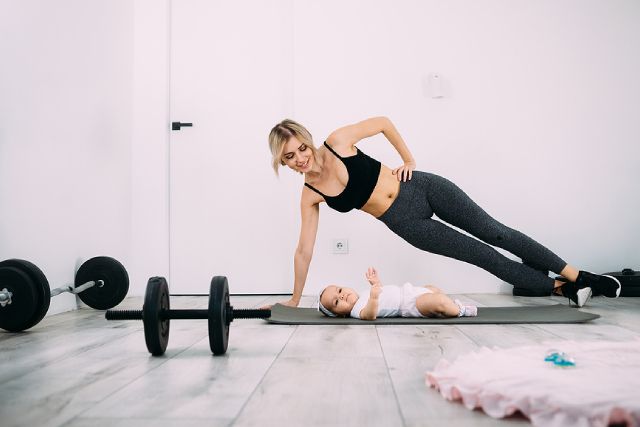After giving birth, many new mothers struggle to regain their strength and fitness levels. Between caring for a newborn, lack of sleep, and recovering from childbirth, finding the time and energy to exercise can be a challenge. However, incorporating postpartum workouts into your routine can help you regain strength, improve your overall health, and boost your mood.
The Importance of Postpartum Workouts
During pregnancy and childbirth, your body undergoes significant changes. Your muscles weaken, your pelvic floor muscles stretch and weaken, and your overall fitness levels may decrease. Engaging in postpartum workouts can help to strengthen your muscles, improve your cardiovascular fitness, and aid in postpartum recovery. In addition, regular exercise can help to reduce stress, improve sleep quality, and boost your energy levels.
When to Start
It is important to consult with your healthcare provider before starting any postpartum workout routine. In general, most women can safely start exercising 6-8 weeks after giving birth, though this timeline may vary depending on the individual. If you had a cesarean section or experienced any complications during childbirth, you may need to wait longer before starting to exercise.
Choosing the Right Workouts
When selecting postpartum workouts, it is important to choose exercises that are safe and effective for your postpartum body. Low-impact exercises such as walking, swimming, and yoga are excellent options for new mothers. These exercises can help to improve cardiovascular fitness, strengthen muscles, and promote flexibility without putting excessive strain on your body.
Recommended Postpartum Exercises
1. Pelvic Floor Exercises: Pelvic floor exercises, also known as Kegels, can help to strengthen your pelvic floor muscles and improve urinary control.
2. Core Exercises: Gentle core exercises such as pelvic tilts and bridges can help to strengthen your abdominal muscles and improve stability.
3. Strength Training: Using light weights or resistance bands, performing exercises such as squats, lunges, and bicep curls can help to strengthen muscles throughout your body.
4. Cardiovascular Exercise: Walking, cycling, swimming, or using an elliptical machine can help to improve cardiovascular fitness and burn calories.
Creating a Postpartum Workout Routine
When creating a postpartum workout routine, start slowly and gradually increase the intensity and duration of your workouts. Aim to exercise for at least 30 minutes most days of the week, incorporating a combination of cardiovascular, strength, and flexibility exercises. Listen to your body and rest when needed, and be sure to stay hydrated and nourished to support your energy levels.
Additional Tips for Success
1. Enlist Support: Ask your partner, family members, or friends to help with childcare or household tasks so you can find time to exercise.
2. Stay Flexible: Be willing to adapt your workout routine based on how you are feeling that day, and don’t be too hard on yourself if you miss a workout.
3. Set Realistic Goals: Focus on progress, not perfection, and celebrate small victories along the way.
Conclusion
Postpartum workouts are an essential component of postpartum recovery and can help new mothers regain strength, improve fitness levels, and enhance overall well-being. By choosing safe and effective exercises, creating a consistent workout routine, and listening to your body’s needs, you can successfully regain strength and feel your best after childbirth.
